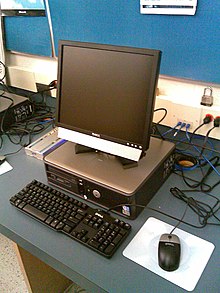Projector Ceiling Mounts
 In most boardrooms, you’ll find the projector permanently mounted, convenient, and ready for use at any time. They are either wall-mounted or ceiling-mounted. However, in a larger room that is routinely used for educational or promotional programs, ceiling-mounted projection is the best possible choice.
In most boardrooms, you’ll find the projector permanently mounted, convenient, and ready for use at any time. They are either wall-mounted or ceiling-mounted. However, in a larger room that is routinely used for educational or promotional programs, ceiling-mounted projection is the best possible choice.
When the viewing audience is sizeable, all the space on the floor is needed for seats. Projecting from a roll-around cart has many disadvantages, not the least of which is the power source. On the other hand, with ceiling-mounted projection, it is always ready to use.
Your dealer should tell you whether the projector you’re buying can be viewed upside down and whether there is a mount for this particular model. If not, ask. Not all projectors can be ceiling-mounted.
Your projector dealer will have the kind of mount you need for ceiling-mounted projection and will be able to help you with directions for installing it. You may choose to have a professional installer do this work for you; however, many projector owners who are do-it-yourselfers do it themselves.
Physical Alignment
If you are unable to adjust the keystone of a projector, then this is vital. If the projector and screen are not “square” to each other or if there is significant deviation from the recommendations of the manufacturer, you’ll have serious and frustrating problems with adjustments and picture quality. You need to preplan. The location of the ceiling-mounted projector with relationship to the screen needs to be as precise as possible. Mark the spot once and then verify by going through all the steps again.
Again, if you’re doing this yourself, be sure to get the advice of an experienced technician who has done many ceiling mounted projection installations.
Convert Factory Installation Charts
There should be a chart in the box with your projector. Unfortunately, your equivalents might be different from the one shown so you’ll need to do the conversion for ceiling-mounted projection yourself. For example, if the chart shows 4:3 aspect ratio screens but your screen is 16:9, you’ll need to make that conversion. Your dealer should be able to help you with these calculations.
Attaching the Projector Ceiling Mount
In the first place, please remember that a ceiling-mounted projector must be solidly and securely mounted no matter what kind of ceiling you have. For example, if this is in a typical residence, the ceiling is probably drywall attached to strapping that is attached to joists. If this is true, mount to the joist! Neither drywall nor strapping is adequate to support a ceiling-mounted projector.
Some installers attach a A�” plywood support panel securely to the joists and then attach the mount to that. Be sure to use screws that are adequate to the job so your mount will be secure.
Mounting a ceiling-mounted projector to an upstairs floor or an attic floor requires the same steps but with modifications to fit the configuration. On the other hand, if the ceiling is concrete, six A�” sleeve anchor bolts are recommended.
Almost every projector ceiling mount can be attached through a suspended ceiling and to cathedral ceilings, but they will have special requirements. Ask your dealer or an experienced technician about such an installation.